|
Aug. 7, 2023
The 2023-25 Municipal Dam Grant Application opens Sept. 5, 2023 and closes March 1, 2024.
The grant program provides a cost-sharing opportunity for eligible engineering and construction costs for dam maintenance, repair, modification or abandonment and removal up to a maximum award of $1 million.
The 2023-25 biennial budget provided $4 million for dam grants and the majority will be committed to the program.
This grant cycle will prove to be highly competitive. Please keep this in mind when completing the application. You can find the updated application form and instructions, along with additional reference materials, on our Municipal Dam Grant website.
A fully completed application and all required attachments must be received before close of business on March 1, 2024 to be considered for funding.
We strongly encourage interested eligible parties to apply.
For technical assistance, please contact your local DNR Water Management Engineer.
For grant administration assistance, please contact Wendy Soleska, DNR Grant Manager at wendy.soleska@wisconsin.gov or 608-852-1358.
|
|
|
Summer presents special problems for dam owners. Although most of Wisconsin is experiencing drought conditions, there are places in the state that have experienced incredibly fast and substantial downpours, creating flashy water levels and potential flooding threats.
In 2022 there were seven locations in June, July and August that experienced over three inches of rain in a five-to-six-hour event. Having and knowing where your up-to-date Emergency Action Plan (EAP) is located, having emergency contact numbers available, and knowing who and how to contact your DNR regional water management engineer are important year-round.
Up-to-date EAPs are just one way to stay prepared. Seasonal cleaning is always a good idea – it applies to dams too, not just house cleaning. In any season, clean-up is essential to maintain your dam in good working condition and to identify any changes that may have occurred over time.
Some dam-cleaning tips include:
-
Debris clean up – Clean debris from the gates, spillways and other outlet structures. Debris accumulates all year, but it is very important to clear the branches, weeds and other accumulated debris from your dam before spring flooding. Debris in the spillway and gates severely reduces the capacity of the dam and often leads to overtopping during high flows.
-
Gate operation – Check your gate operators. If you have chains to lift gates, be sure they are in good condition and will not fail if you are faced with opening gates or pulling logs. Get the grease gun out and lubricate the motors and gate stems. Find your gate wheels, keys to the fences, pike poles and gaff hooks and put them in a place that is easily accessible during a flood event.
-
Structural inspection – Walk the dam and note problems that have developed during the winter months. Take pictures and document ice and freeze/thaw damage, scour, erosion, seepage or piping, and other changes that could affect how your dam operates, both under normal and flooding conditions. If serious problems are observed, notify a consultant engineer and the DNR regional water management engineer right away.
-
IOM/EAP review – Review the plans you have developed for Inspection, Operation and Maintenance, as well as Emergency Action. Revise telephone lists if necessary, and your list of suppliers for emergency resources. Make sure that you let everyone on the sign-off know changes you have made.
Heat and humidity keeping you indoors? Here are a few office training ideas:
- Having emergency contact phone numbers readily available (law enforcement, local emergency government, Wisconsin Emergency Hotline (800-943-0001, Press “1” for DNR Duty Officer), dam operators and their backups, owner’s dam safety consultant, and DNR regional water management engineer for the county in which the dam is located).
- Coordinating dam operation with upstream and downstream dam owners;
- Identifying local resources like contractors and utilities.
- Referring to dam safety and floodplain zoning maps for an estimate of flood prone properties upstream and downstream of the dam.
- Establish backup personnel to monitor and operate the dam if needed.
There are very few people who like paperwork or doing things over and over, but when you are under stress or in an emergency, the time you spent on preparing for that moment, however tedious it is, will be invaluable.
|
|
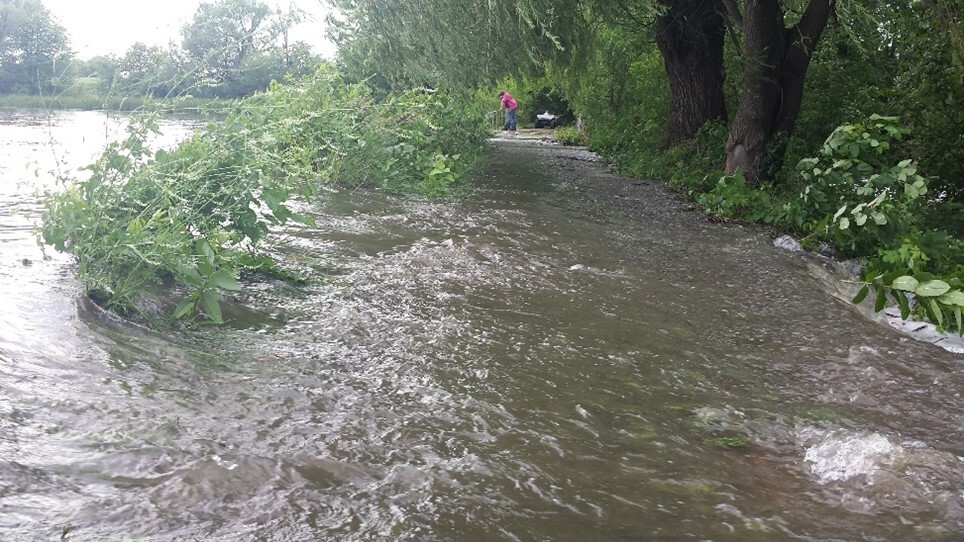 Photo Credit: Wisconsin DNR
Dam ownership carries significant legal responsibility. The general rule is that a dam owner is responsible for the safety of their dam(s), and liability can be imposed upon a dam owner for failure to maintain, repair or operate the dam(s) in a safe and proper manner.
As a result, owners must be informed on all aspects of operating and maintaining a dam safely. To make accessing information and resources easy, the Association of State Dam Safety Officials (ASDSO) has developed the ‘Dam Owner Academy’ video series. The series is a free resource, and each video concisely explores one critical aspect of ownership. The new videos focus on the following:
-
Plants & Animals on Dams (6:34) –This video discusses the best vegetation to having growing on dams and how to maintain it. Poor maintenance of vegetation or unwanted vegetation can severely affect the dam. The video also discusses the need to manage burrowing animals.
-
Seepage, Slope Stability & Seismic Issues (6:45) – Most dams in the U.S. are earthen dams. There are several serious issues that are discussed in this video: cracking, slides, large depressions and internal erosion (piping).
-
Learning from Dam Failures (6:54) – This video describes four primary issues leading to dam failure: overtopping, inadequate maintenance and upkeep, seepage and piping, and structural issues from internal and external pressures. This video discusses inspection schedules and the effect events have on dams. Damfailures.org outlines case studies of dam failures and the lessons learned.
-
Concrete Problems & Repairs (8:11) – This video covers the problems that may occur with concrete dams or associated structures and potential repairs. Honeycombing, bug holes, degradation, scaling, spalling, efflorescence, concrete erosion, rust, cavitation and structural cracks are discussed, as well as repair options.
In addition to these four new videos, please visit ASDSOs 'Dam Owner Academy' Videos website to view an additional eight videos.
Thank you to ASDSO's Dam Owner Outreach Committee for leading the effort to develop this series.
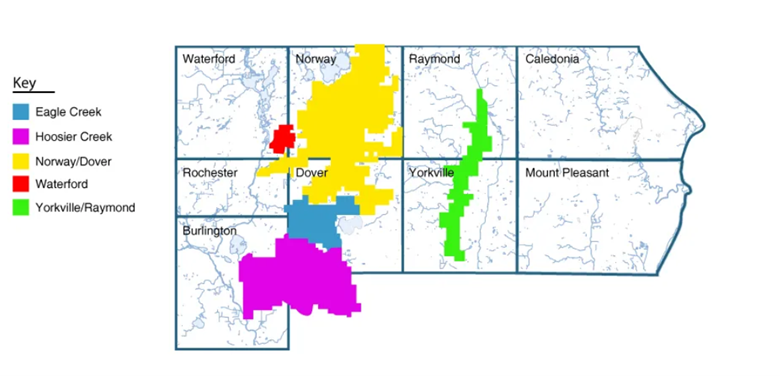
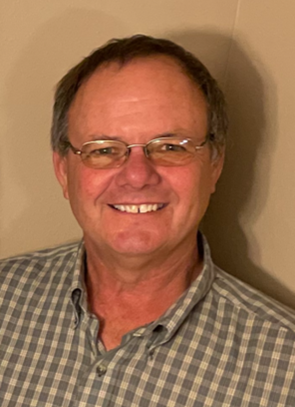
Racine County owns seven dams (Horlicks, Rochester, Wind Lake, Waterford, Bohner Pond, Bohner Lake and Eagle Lake). While Racine County owns the dams, a local drainage district has the responsibility of operating two of them. There are five drainage districts in Racine County which were formed in the early 1900s. The Norway/Dover Drainage District (District) was formed in 1908, has over 32,000 acres of lakes, rivers and streams within its boundaries, and there is in excess of 55,000 acres in the district. Tom Halter is with the Norway/Dover Drainage District and operates Wind Lake and Rochester Dams, which are located within the District boundaries.
|
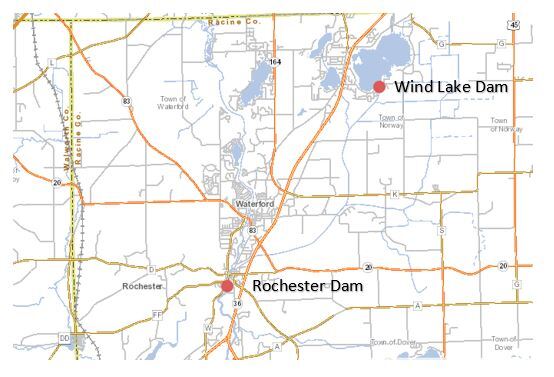
Wind Lake Dam (3,740-acre feet of normal storage) crosses Muskego Creek. It is considered a large dam and its main purpose is for recreation. It was first built in 1905 and reconstructed in 1972. Rochester Dam (160-acre feet of normal storage) is located on the Fox River. It is also considered a large dam and today’s purpose is for recreation.
Rochester Dam was built in 1845 and permitted under the Territorial Legislature of 1843. The original permit was for a flour and feed grinding mill. Rochester Dam was privately held until the Village of Rochester took control in 1939 and in 1951, the village added two flood gates. In 1974, the district added two additional flood gates. Racine County took ownership in 1979. Both Rochester and Wind Lake Dams are concrete structures with radial gates.
In addition to operating both dams, Tom owns and operates a farm that produces various row crops and has always been involved in the district as a result of the family farm activities. He started his dam operating career while working with his father on the farm and working on cars. In 2005, the Rochester Dam operator became ill, Tom offered to help, and he learned dam operation on the job. In 2014, Racine County Public Works arranged to have Tom as the operator at Wind Lake Dam too.
To help Tom with his dam operations, he developed a process called ‘CADET.' His personal goal is to reduce impacts on the channels below the two dams by managing water levels and flows and following operating orders (i.e., water levels established by DNR) with his various partners.
-
C – Communication about other dams and lakes in your watershed. Communicating with individuals whose actions will affect your decisions is vital. Storms have been variable – Muskego, just a few miles upstream of Wind Lake Dam, can get seven inches of precipitation while there is only one inch at Wind Lake Dam. This can be deceiving if you are unaware of what is going on within the system, and you may not realize that an upstream dam will be releasing water.
-
A – Awareness of weather and ground conditions surrounding your dams and within the watershed. Frozen or saturated ground will affect the decisions you make.
-
D – Data access is especially useful. Tom was a strong proponent to have US Geological Survey (USGS) stream gauges installed at several locations in the watershed. Operators can see what is happening at other facilities in the watershed even if they are unable to communicate with other dam operators.
-
E – Experience creates knowledge of the proper inspection, maintenance and operation of each facility. With this experience and knowledge, the district is able to provide feedback to dam owners, the DNR, and other upstream and downstream dam operators.
-
T – Timing of the operation. Proactive and timely actions result in better outcomes.
One of the things that surprised Tom during his career as dam operator was how much the dam operation affects the channels below the dams. High discharge can affect the stability of the channel. Plugged channels can increase the time water stays in the channel. As an example, in 2018 the district cleaned the canal between Wind Lake Dam and Rochester Dam. Prior to cleaning the Wind Lake Dam channel, water changes would take 24 hours to reach Rochester Dam. After it was cleaned, Tom observed the same volume of water took only two hours to reach Rochester. This makes a big difference to downstream landowners and users.
Tom said that operators work with the public every day. People love their recreation and lake access. Helping the public understand that dam operation is more than simply opening or closing the gates is important. Dam operation includes the consideration of many stakeholders including other dams, landowners along the waterways, and recreation enthusiasts.
Of all the things that might worry Tom, it's weather forecasts. Possible heavy rains under certain conditions can keep you up all night. It seems like spring holds the most uncertainty. Rains on frozen ground, ice in the channel and big spring storm events will keep you up at night looking at the data. Tom has noticed that many of our big storms are occurring at night, which means he and others need to get out there at all hours and figure out what is happening or might happen.
Tom has found that it has been extremely gratifying to be involved in all the many repair projects, proposed improvements to operating orders, and especially the practice of ‘CADET’ within the district. Any operator can better implement what is stated in an operating order because the operator knows how the whole system works. He and his colleagues have helped make the Norway/Dover Drainage District a great place to recreate and live alongside the dams.
Drainage Districts Map Photo Credit: Racinecountydrainage.com
Other Images Photo Credit: Wisconsin DNR
|
Drainage Districts are a governmental entity organized by Wisconsin law. About a third of Wisconsin farms depend on constructed drains to remove excess water from their land for agriculture use. Most of these are operated by a single landowner or by voluntary cooperation among neighbors. However, about 10% of these drains are organized as drainage districts, governed by county drainage boards. The Wisconsin Department of Agriculture, Trade and Consumer Protection (DATCP) regulates drainage districts under Wisconsin law.
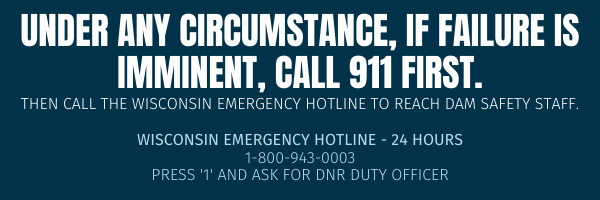 "Dam Safety News" is published by the Wisconsin DNR's Waterways Bureau. Its purpose is to inform dam owners, operators and others concerned about dam safety issues. Comments or contributions are welcome.
This newsletter is supported by funding through FEMA National Dam Safety Grant No. EMC-2022-GR-00005 as part of the National Dam Safety Program. The contents do not necessarily reflect the views and policies of the Federal government.
|
|
|
|
|